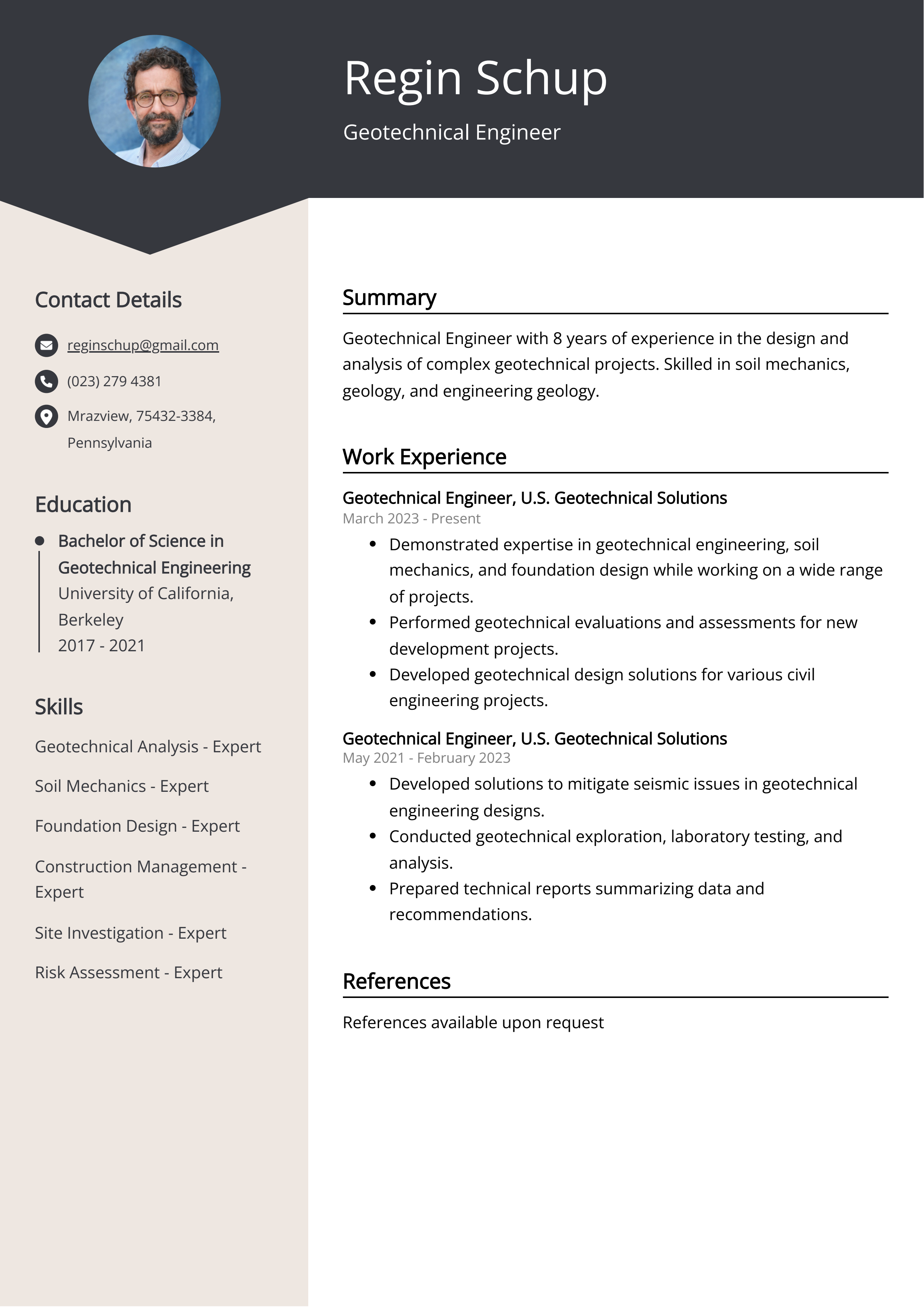The Greatest Guide To Geotheta
The Greatest Guide To Geotheta
Blog Article
The Geotheta PDFs
Table of ContentsGeotheta Can Be Fun For EveryoneSee This Report on GeothetaOur Geotheta PDFsSome Known Facts About Geotheta.The Basic Principles Of Geotheta

They carry out website examinations, gather examples, perform laboratory tests, and analyze data to assess the suitability of the ground for construction projects - Engineer of Record. Based on their findings, geotechnical engineers supply suggestions for foundation style, slope security, maintaining structures, and mitigation of geotechnical threats. They work together with various other professionals, such as designers, structural engineers, and building and construction groups, to make certain that geotechnical factors to consider are integrated into the general task layout and implementation
By evaluating the actions and buildings of soil and rock, they can determine prospective geotechnical dangers such as landslides, dirt settlement, or slope instability. Their proficiency helps stop failings or crashes that might threaten lives and residential or commercial property. Here are some detailed obligations and responsibilities of a geotechnical designer: Site Investigation: Geotechnical engineers conduct website examinations to collect data on subsurface conditions.
They interpret the data to understand the residential or commercial properties and habits of the dirt and rock, including their toughness, permeability, compaction characteristics, and groundwater conditions. Geotechnical Evaluation and Design: Geotechnical designers assess the information gathered throughout website investigations to analyze the security and viability of the website for building and construction projects. They perform geotechnical calculations and modeling to assess elements such as birthing ability, settlement, incline stability, side planet pressures, and groundwater flow.
Some Known Details About Geotheta
Structure Style: Geotechnical designers play a critical function in making structures that can securely sustain the designated structure. They evaluate the dirt conditions and tons demands to identify the suitable foundation kind, such as shallow structures (e.g., grounds), deep foundations (e.g (https://pubhtml5.com/homepage/jugmn/)., heaps), or specialized strategies like dirt renovation. They consider aspects such as settlement limitations, birthing capacity, and soil-structure interaction to establish ideal structure styles
They evaluate building and construction plans, screen site tasks, and carry out field examinations to confirm that the design referrals are adhered to. If unanticipated geotechnical problems occur, they examine the scenario and give suggestions for removal or changes to the layout. Danger Evaluation and Reduction: Geotechnical designers evaluate geotechnical hazards and risks connected with the task website, such as landslides, liquefaction, or dirt disintegration.

Collaboration and Communication: Geotechnical designers work carefully with various other specialists associated with a job, such as architects, structural designers, and building and construction groups. Effective communication and collaboration are important to integrate geotechnical factors to consider into the total task layout and construction process. Geotechnical engineers supply technological proficiency, solution inquiries, and guarantee that geotechnical needs are met.
Little Known Facts About Geotheta.
Below are some kinds of geotechnical engineers: Foundation Engineer: Structure designers specialize in developing and examining structures for structures. They evaluate the dirt conditions, lots demands, and site attributes to figure out one of the most proper structure type and style, such as superficial structures, deep structures, or specialized strategies like heap structures.
They assess the aspects affecting slope security, such as soil properties, groundwater conditions, and incline geometry, and create techniques to avoid incline failings and reduce risks. Quake Engineer: Earthquake designers focus on evaluating and creating structures to stand up to seismic forces. They assess the seismic danger of a website, review soil liquefaction possibility, and establish seismic layout standards to make sure the safety and security and durability of frameworks during quakes.
They do area testing, collect examples, and assess the gathered data to characterize the dirt buildings, geologic formations, and groundwater conditions at a site. Geotechnical Instrumentation Engineer: Geotechnical instrumentation designers concentrate on tracking and measuring the actions of soil, rock, and structures. They mount and preserve instrumentation systems that monitor factors such as dirt settlement, groundwater levels, slope motions, and structural displacements to analyze efficiency and provide very early warnings of potential issues.
Not known Factual Statements About Geotheta
They conduct examinations such as triaxial tests, loan consolidation tests, straight shear tests, and permeability tests to collect data for geotechnical evaluation and design. Geosynthetics Designer: Geosynthetics designers focus on the style and application of geosynthetic products, such as geotextiles, geogrids, and geomembranes. They use these materials to enhance dirt security, reinforce slopes, supply drain services, and control erosion.
They often tend to be investigative people, which indicates they're intellectual, reflective, and analytical. They are curious, systematic, reasonable, analytical, and logical. Some of them are likewise social, indicating they're kind, charitable, participating, patient, caring, useful, compassionate, skillful, and pleasant - Tailings Engineer.
In the office environment, geotechnical designers utilize specialized software devices to execute computations, create styles, and evaluate information. They prepare reports, evaluation job requirements, connect with clients and employee, and coordinate project tasks. The workplace setting offers a conducive setting for study, evaluation, and cooperation with various other experts associated with the job.
The Geotheta PDFs
They frequently check out job websites to carry out website investigations, examine geotechnical problems, and collect information for analysis. These visits include traveling to various areas, occasionally in remote or tough terrains. Geotechnical engineers might do soil sampling, conduct examinations, and screen construction activities to make sure that the geotechnical facets of the project are being implemented properly.
Geotechnical designers likewise work in specialized geotechnical research laboratories. Geotechnical lab engineers work thoroughly in these environments, handling screening devices, operating tools, and videotaping data.
Report this page